PyMAP: Python-Based Data Analysis Package with a New Image Cleaning Method to Enhance the Sensitivity of MACE Telescope
Abstract
1. Introduction
2. Imaging Atmospheric Cherenkov Technique
Major Atmospheric Cherenkov Experiment (MACE)
3. Python-Based MACE Data Analysis Package (PyMAP)
3.1. Good Time Interval (GTI)
3.2. Reading the Data
3.3. Image Cleaning
3.4. Standard Method Cleaning
3.5. Image Parameterization
3.6. Image Classification Using Random Forest
3.7. DIOS Image Cleaning Method
3.8. Importance of DIOS Image Cleaning Method
4. Sensitivity Estimation
5. Conclusions
Author Contributions
Funding
Data Availability Statement
Acknowledgments
Conflicts of Interest
Abbreviations
| VHE | Very High Energy |
| MACE | Major Atmospheric Cherenkov Experiment |
| PyMAP | Python-based MACE Analysis Package |
| IACT | Imaging Atmospheric Cherenkov Telescope |
| DIOS | Denoising Image of Shower |
| NSB | Light Of Night Sky |
| EAS | Extensive Air Shower |
| PMT | Photo Multiplier Tube |
| DAS | Data Aquisition Systems |
| GTI | Good Time Interval |
| LED | Light Emitting Diode |
| SCR | Single Channel Rate |
| SD | Standard Deviation |
| BT | Boundary Threshold |
| PT | Picture Threshold |
| RF | Random Forest |
Appendix A
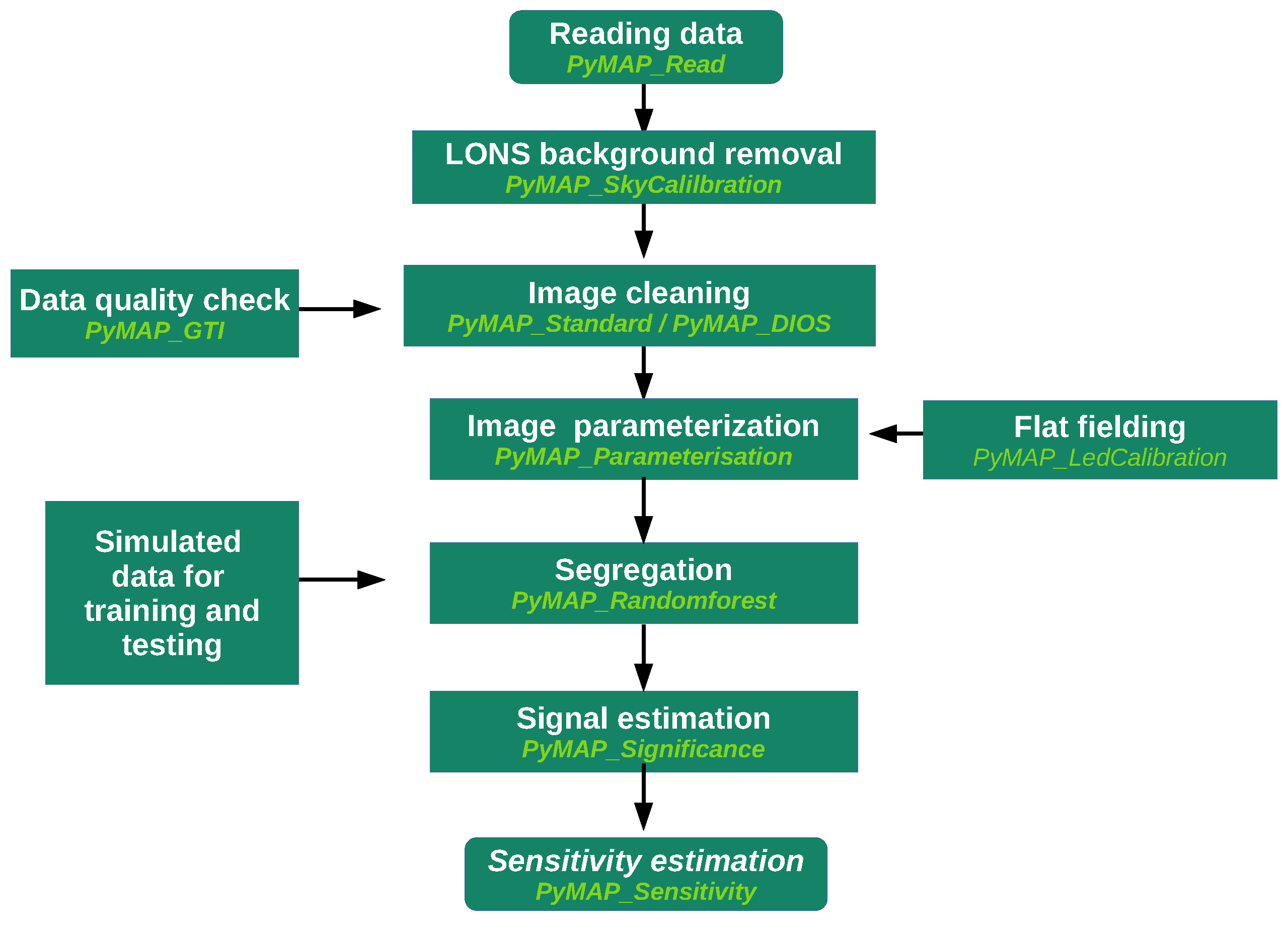
References
- Hess, V.F. Über beobachtungen der durchdringenden Strahlung bei sieben Freiballonfarten. Phys. J. 1912, 13, 1086–1091. [Google Scholar]
- Aharonian, F.; Akhperjanian, A.G.; Bazer-Bachi, A.R.; Beilicke, M.; Benbow, W.; Berge, D.; Bernlöhr, K.; Boisson, C.; Bolz, O.; Borrel, V.; et al. Observations of the Crab nebula with HESS. Astron. Astrophys. 2006, 457, 899–915. [Google Scholar] [CrossRef]
- Cortina, J. Status and First Results of the MAGIC Telescope. Astrophys. Space Sci. 2005, 297, 245–255. [Google Scholar] [CrossRef]
- Hanna, D.; Acciari, V.A.; Amini, R.; Badran, H.M.; Blaylock, G.; Bradbury, S.M.; Buckley, J.H.; Bugaev, V.; Butt, Y.; Byrum, K.L.; et al. First results from VERITAS. Nucl. Instruments Methods Phys. Res. Sect. A Accel. Spectrometers, Detect. Assoc. Equip. 2008, 588, 26–32. [Google Scholar] [CrossRef]
- Meyer, M.; Horns, D.; Zechlin, H.S. The Crab Nebula as a standard candle in very high-energy astrophysics. Astron. Astrophys. 2010, 523, A2. [Google Scholar] [CrossRef]
- Tickoo, A.K.; Koul, R.; Rannot, R.C.; Yadav, K.K.; Chandra, P.; Dhar, V.K.; Koul, M.K.; Kothari, M.; Agarwal, N.K.; Goyal, A. Long term performance evaluation of the TACTIC imaging telescope using 400 h Crab Nebula observation during 2003–2010. Pramana 2014, 82, 585–605. [Google Scholar] [CrossRef]
- Weekes, T.C.; Cawley, M.F.; Fegan, D.J.; Gibbs, K.G.; Hillas, A.M.; Kowk, P.W.; Lamb, R.C.; Lewis, D.A.; Macomb, D.J.; Porter, N.A.; et al. Observation of TeV Gamma Rays from the Crab Nebula Using the Atmospheric Cerenkov Imaging Technique. Astrophys. J. 1989, 342, 379–392. [Google Scholar] [CrossRef]
- Abe, H.; Abe, K.; Abe, S.; Aguasca-Cabot, A.; Agudo, I.; Crespo, N.A.; Antonelli, L.A.; Aramo, C.; Arbet-Engels, A.; Arcaro, C.; et al. Observations of the Crab Nebula and Pulsar with the Large-Sized Telescope Prototype of the Cherenkov Telescope Array. Astrophys. J. 2023, 956, 80. [Google Scholar] [CrossRef]
- Nishimura, J.; Kamata, K. On Theory of cascade Showers. Prog. Theor. Phys. 1952, 7, 185–192. [Google Scholar] [CrossRef]
- Weekes, T.C. Very High Energy Gamma-ray Astronomy; Institute of Physics Publishing: Bristol, UK, 2003; Volume 3, pp. 43–44. [Google Scholar]
- Maier, G. Cosmic-ray events as background in imaging atmospheric Cherenkov telescopes. Astropart. Phys. 2007, 28, 72–81. [Google Scholar] [CrossRef]
- Sobczynska, D. Natural limit on the gamma/hadron separation for a stand alone air Cherenkov telescope. J. Phys. G Nucl. Part. Phys. 2007, 35, 2279–2288. [Google Scholar] [CrossRef]
- Krennrich, F. New generation atmospheric Cherenkov detectors. Astropart. Phys. 1999, 11, 235–242. [Google Scholar] [CrossRef]
- Krennrich, F. The Next Generation of Ground-based Gamma Ray Telescopes. Am. Phys. Soc. 2001, 46, 2. [Google Scholar]
- Heck, D.; Knapp, J.; Capdevielle, J.N.; Schatz, G.; Thouw, T. Corsika: A Monte Carlo Code to Simulate Extensive Air Showers; Technical Report, Kernforschungszentrum Karlsruhe, 51.02.03; LK 01; Wissenschaftliche Berichte, FZKA-6019. 1998. Available online: https://digbib.bibliothek.kit.edu/volltexte/fzk/6019/6019.pdf (accessed on 23 September 2019).
- Cawley, M.F. Development of the atmospheric Cherenkov imaging technique. Il Nuovo Cimento C 1996, 19, 959–963. [Google Scholar] [CrossRef]
- Weekes, T.C. The Atmospheric Cherenkov Imaging Technique for Very High Energy Gamma-ray Astronomy. arXiv 2005, arXiv:astro-ph/0508253. [Google Scholar]
- Mirzoyan, R. Technological Novelties of Ground-Based Very High Energy Gamma-Ray Astrophysics with the Imaging Atmospheric Cherenkov Telescopes. Universe 2024, 8, 219. [Google Scholar] [CrossRef]
- Hillas, A.M. Differences between gamma-ray and hadronic showers. Space Sci. Rev. 1996, 75, 17–30. [Google Scholar] [CrossRef]
- Khurana, M.; Singh, K.K.; Godiyal, S.; Yadav, K.K. Effects of the moonlight on the operating parameters of the MACE gamma ray telescope: A feasibility study. J. Astrophys. Astron. 2022, 43, 12. [Google Scholar] [CrossRef]
- Hinton, J.A. The Status of TeV Gamma-Ray Astronomy. New J. Phys. 2009, 11, 055005. [Google Scholar] [CrossRef]
- Aharonian, F.A. Very High Energy Cosmic Gamma Radiation: A Crucial Window on the Extreme Universe; World Scientific Publishing: Singapore, 2008; ISBN 978-981-256-355-8. [Google Scholar]
- Hillas, A.M. Cerenkov light images of EAS produced by primary gamma rays and by hadrons. In Proceedings of the 19th International Cosmic Ray Conference (ICRC 1985), San Diego, CA, USA, 11–23 August 1985; Volume 3, pp. 445–448. [Google Scholar]
- Hillas, A.M. Angular and energy distribution of charged particles in electron-photon cascades in air. J. Phys. G Nucl. Phys. 1982, 8, 1461–1473. [Google Scholar] [CrossRef]
- Srivastava, S.; Jain, A.; Nair, P.M.; Sridharan, P. MACE camera controller embedded software: Redesign for robustness and maintainability. Astron. Comput. 2020, 30, 123–135. [Google Scholar] [CrossRef]
- Jain, A.; Srivastava, S.; Mahesh, P.; Deshpande, J.; Padmini, S. Autonomous observation, control, data acquisition and monitoring of MACE telescope. Astropart. Phys. 2024, 157, 102922. [Google Scholar] [CrossRef]
- Yadav, K.K.; Chouhan, N.; Thubstan, R.; Norlha, S.; Hariharan, J.; Borwankar, C.; Chandra, P.; Dhar, V.K.; Mankuzhyil, N.; Godambe, S.; et al. Commissioning of the MACE gamma-ray telescope at Hanle, Ladakh, India. Curr. Sci. 2022, 123, 1428–1435. [Google Scholar] [CrossRef]
- Linhoff, M.; Bhattacharyya, S.; Pérez Romero, J.; Stanič, S.; Vodeb, V.; Vorobiov, S.; Zavrtanik, D.; Zavrtanik, M.; Živec, M. ctapipe-Prototype Open Event Reconstruction Pipeline for the Cherenkov Telescope Array. In Proceedings of the 38th International Cosmic Ray Conference, ICRC (2023), Nagoya, Japan, 26 July–3 August 2023; Volume 444, p. 703. [Google Scholar]
- Moralejo, A.; Gaug, M.; Carmona, E.; Colin, P.; Delgado, C.; Lombardi, S.; Mazin, D.; Scalzotto, V.; Sitarek, J.; Tescaro, D. MARS, the MAGIC Analysis and Reconstruction Software. In Proceedings of the 31st International Cosmic Ray Conference (ICRC 2009), Lodz, Poland, 7–15 July 2009. [Google Scholar]
- Cogan, P. VEGAS, the VERITAS Gamma-ray Analysis Suite. arXiv 2007, arXiv:0709.4233. [Google Scholar]
- Maier, G.; Holder, J. Eventdisplay: An Analysis and Reconstruction Package for Ground-based Gamma-ray Astronomy. In Proceedings of the 35th International Cosmic Ray Conference (ICRC 2017), Busan, Republic of Korea, 12–20 July 2017. [Google Scholar]
- Holler, M.; Balzer, A.; Becherini, Y.; Klepser, S.; Murach, T.; de Naurois, M.; Parsons, R. Status of the Monoscopic Analysis Chains for H.E.S.S. II. In Proceedings of the 35th International Cosmic Ray Conference (ICRC 2013), Rio de Janeiro, Brazil, 2–9 July 2013. [Google Scholar]
- Konopelko, A. et al. [HEGRA Collaboration]. Detection of gamma-rays above 1-TeV from the Crab Nebula by the second HEGRA imaging atmospheric Cherenkov telescope at La Palma. Astropart. Phys. 1996, 4, 199–215. [Google Scholar] [CrossRef]
- Lessard, R.W.; Cayón, L.; Sembroski, G.H.; Gaidos, J.A. Wavelet imaging cleaning method for atmospheric Cherenkov telescopes. Astropart. Phys. 2001, 17, 427–440. [Google Scholar] [CrossRef]
- Bond, I.H.; Hillas, A.M.; Bradbury, S.M. An island method of image cleaning for near threshold events from atmospheric Čerenkov telescopes. Astropart. Phys. 2003, 20, 311–321. [Google Scholar] [CrossRef]
- Kherlakian, M. Application of the optimised next neighbour image cleaning method to the VERITAS array. arXiv 2023, arXiv:2309.14839. [Google Scholar]
- Borwankar, C.; Sharma, M.; Hariharan, J.; Venugopal, K.; Godambe, S.; Mankuzhyil, N.; Chandra, P.; Khurana, M.; Pathania, A.; Chouhan, N.; et al. Observations of the Crab Nebula with MACE (Major Atmospheric Cherenkov Experiment). Astropart. Phys. 2024, 159, 102960. [Google Scholar]
- Breiman, L. Random Forests. Mach. Learn. 2001, 45, 5–32. [Google Scholar] [CrossRef]
- Li, T.-P.; Ma, Y.-Q. Analysis methods for results in gamma-ray astronomy. Astrophys. J. 1998, 272, 313–324. [Google Scholar] [CrossRef]
- Wagnera, R.M.; Lopezb, M.; Masea, K.; Domingo–Santamariac, E.; Goebela, F.; Flixc, J.; Majumdara, P.; Mazinb, D.; Moralejod, A.; Panequea, D.; et al. Observation of the Crab nebula with the MAGIC telescope. In Proceedings of the 29th International Cosmic Ray Conference Pune (ICRC 2005), Pune, India, 3–10 August 2005; Volume 4, pp. 163–166. [Google Scholar]
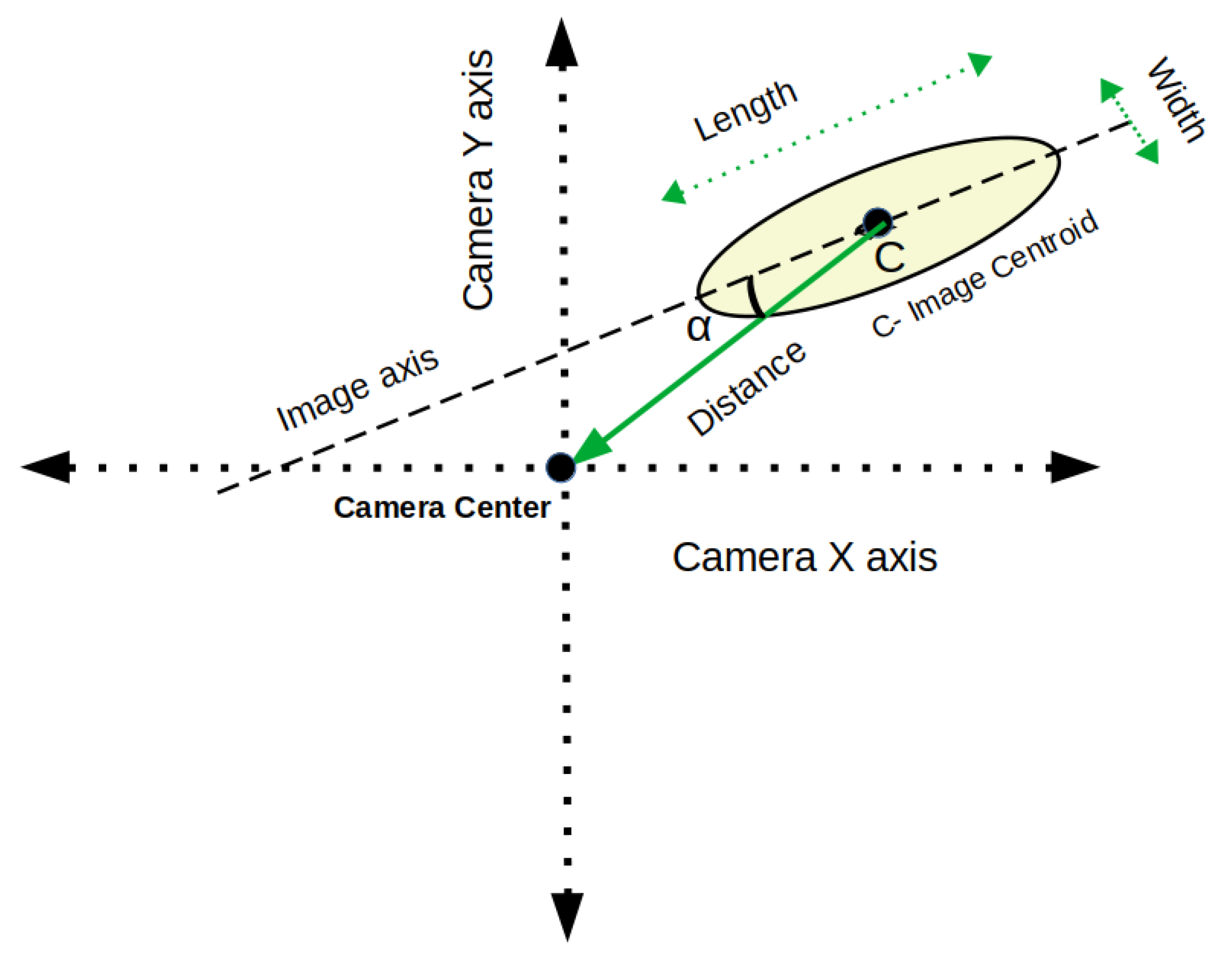
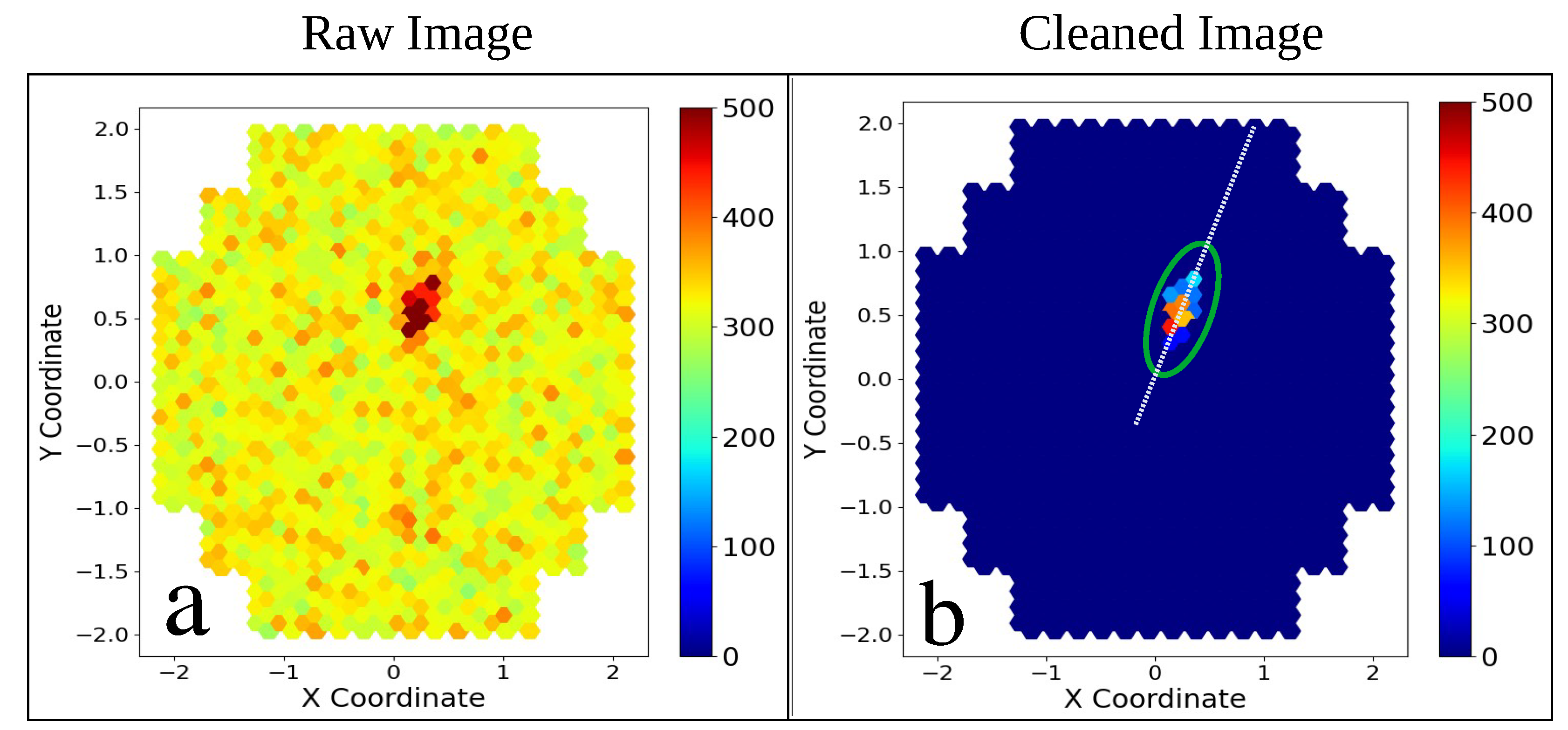
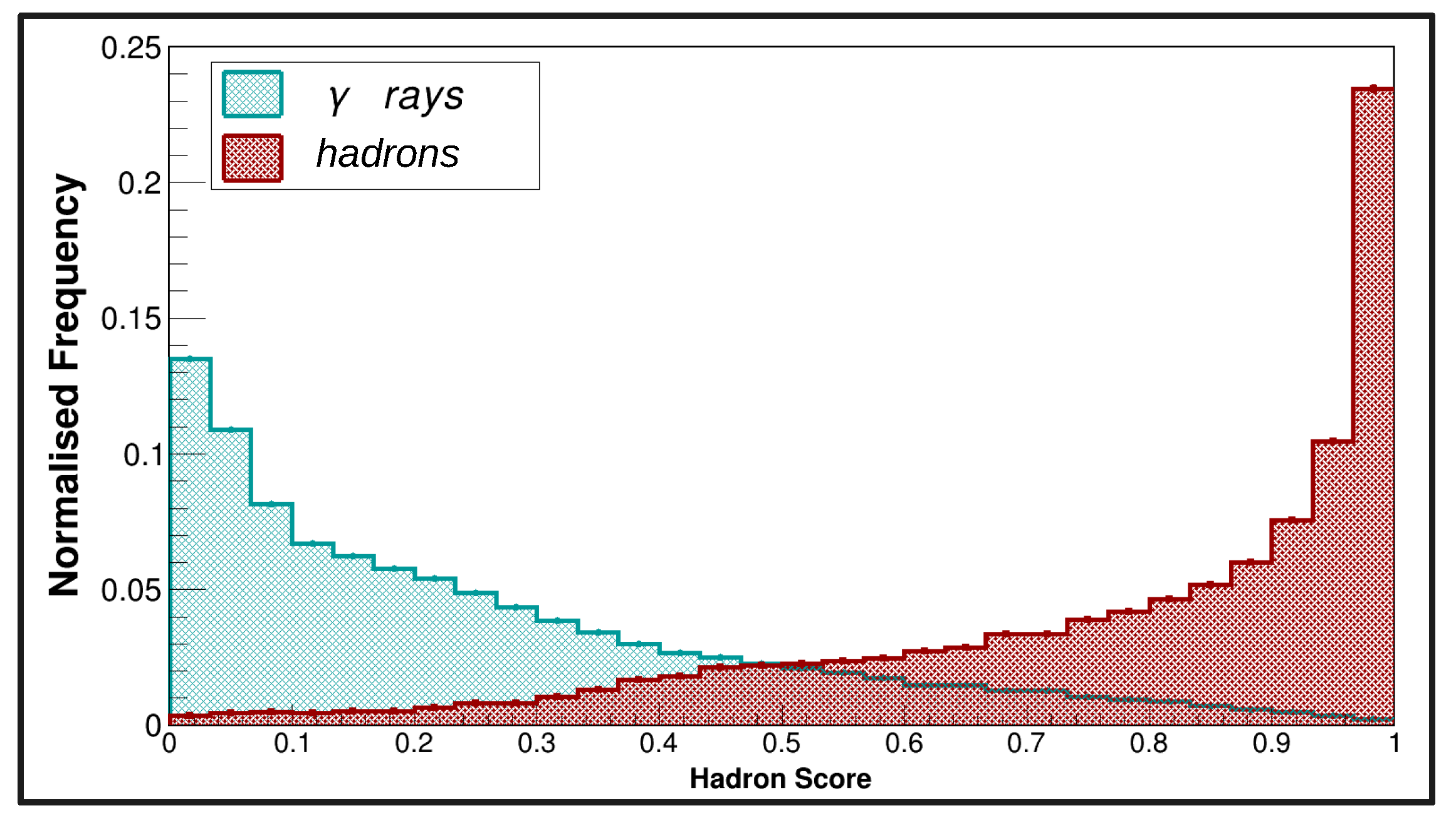
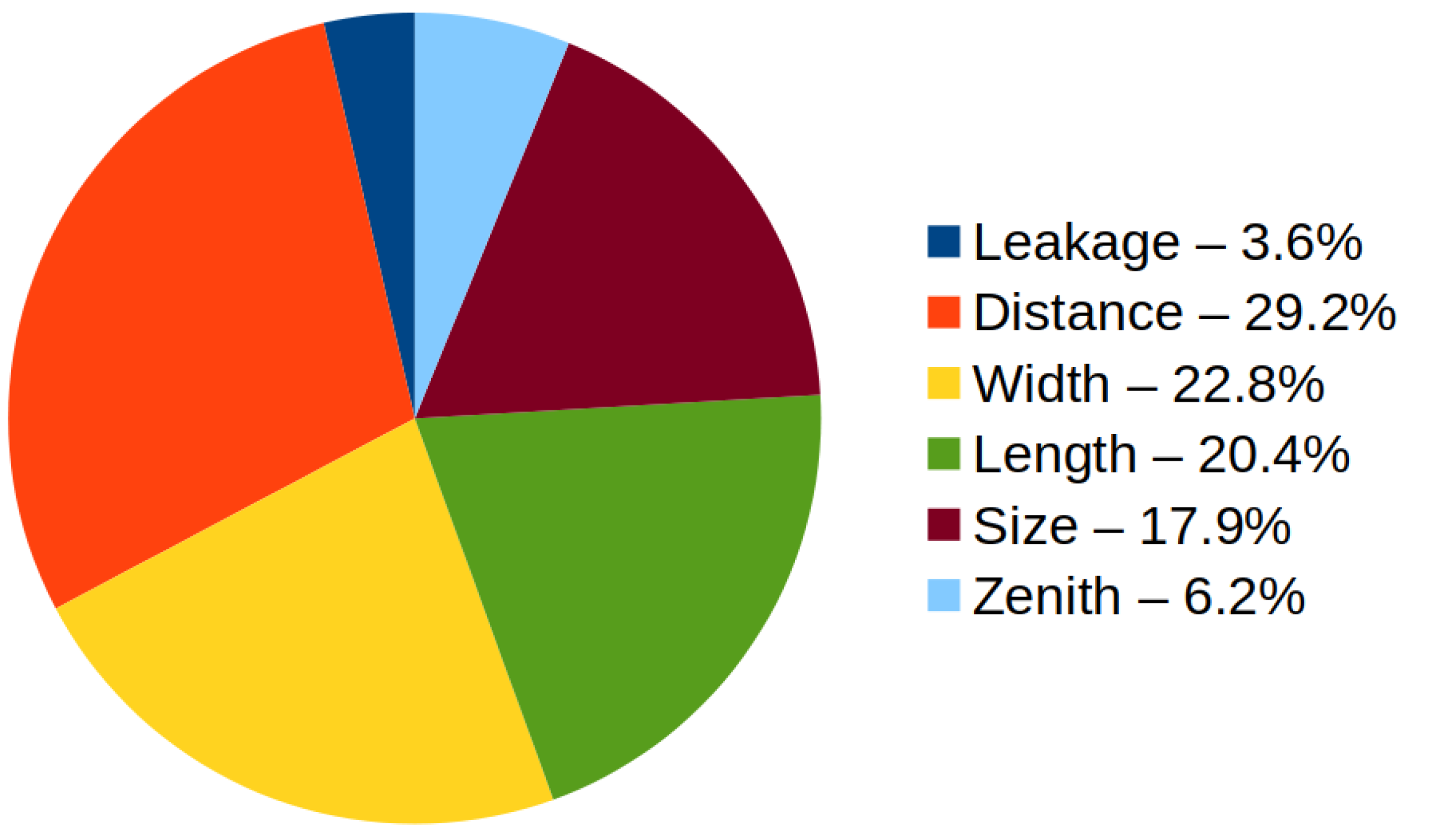
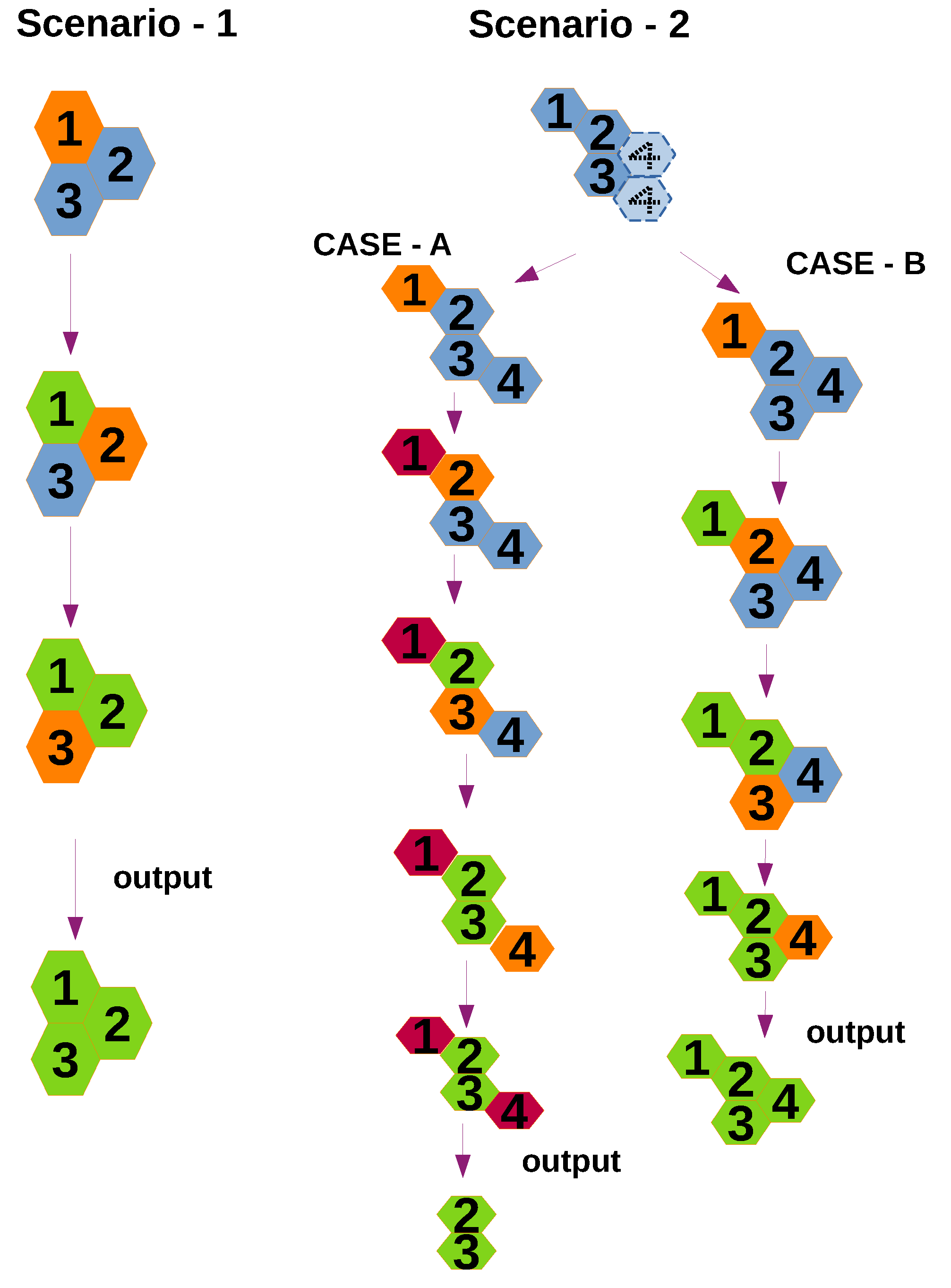

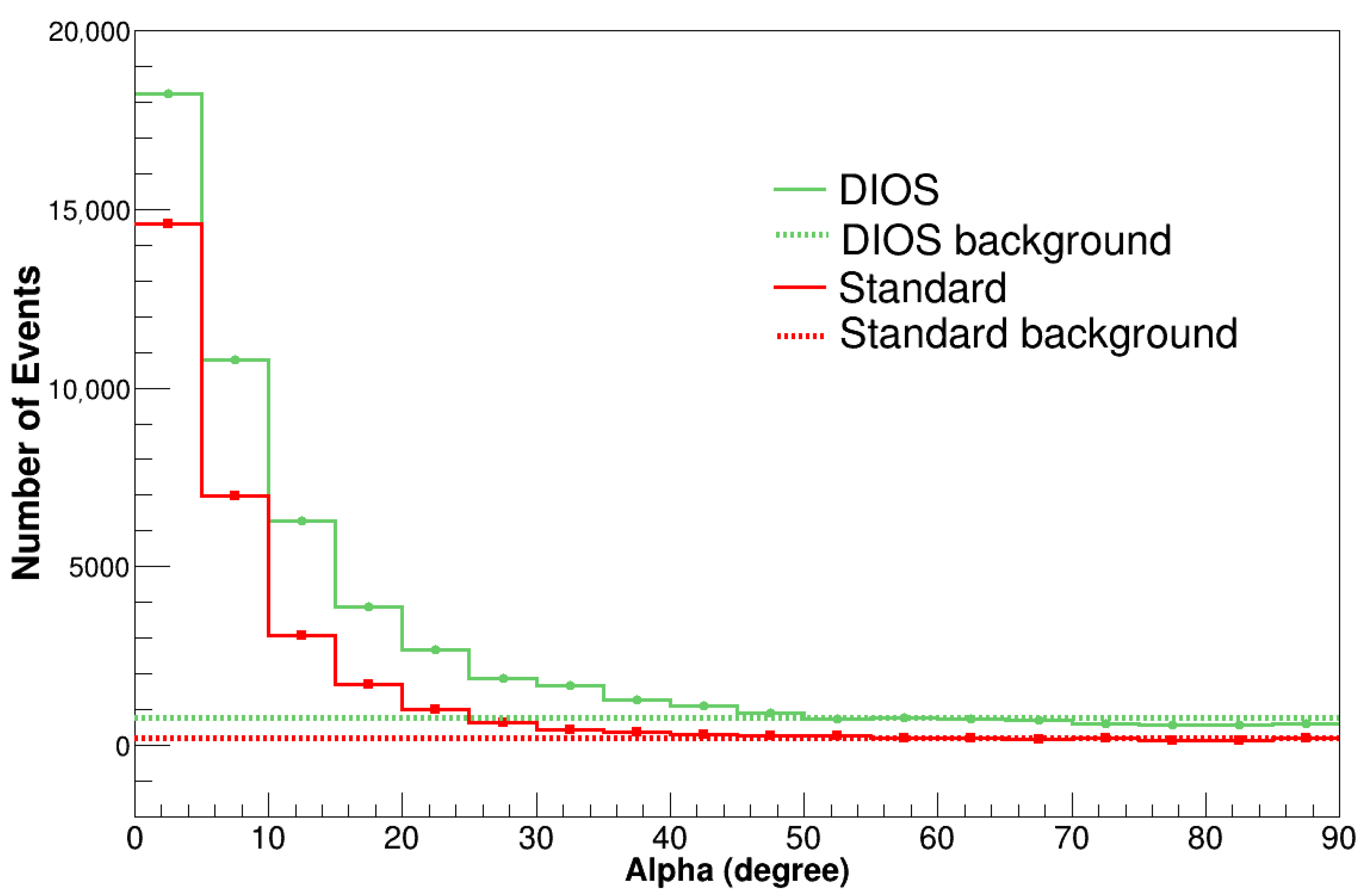
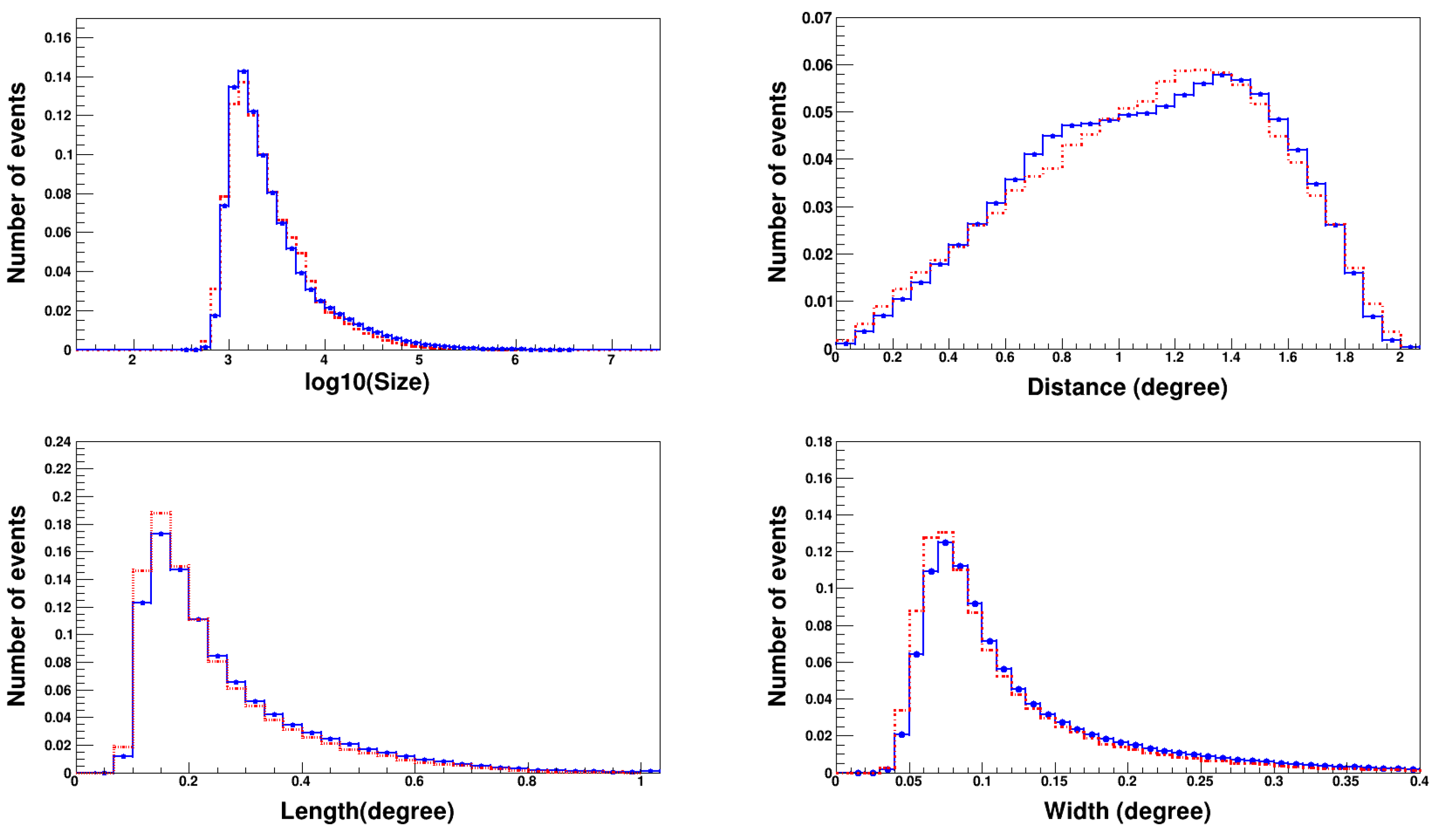
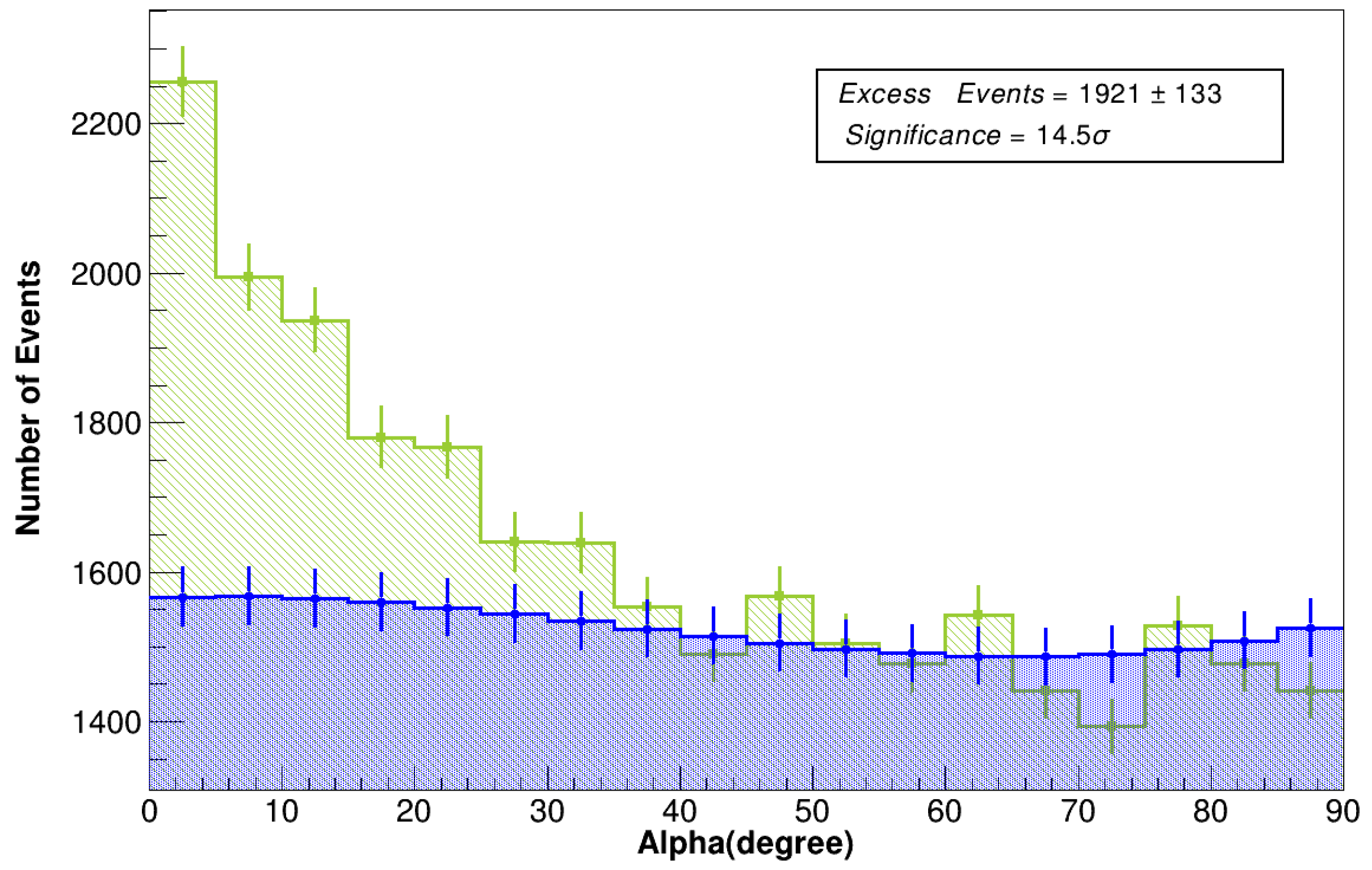

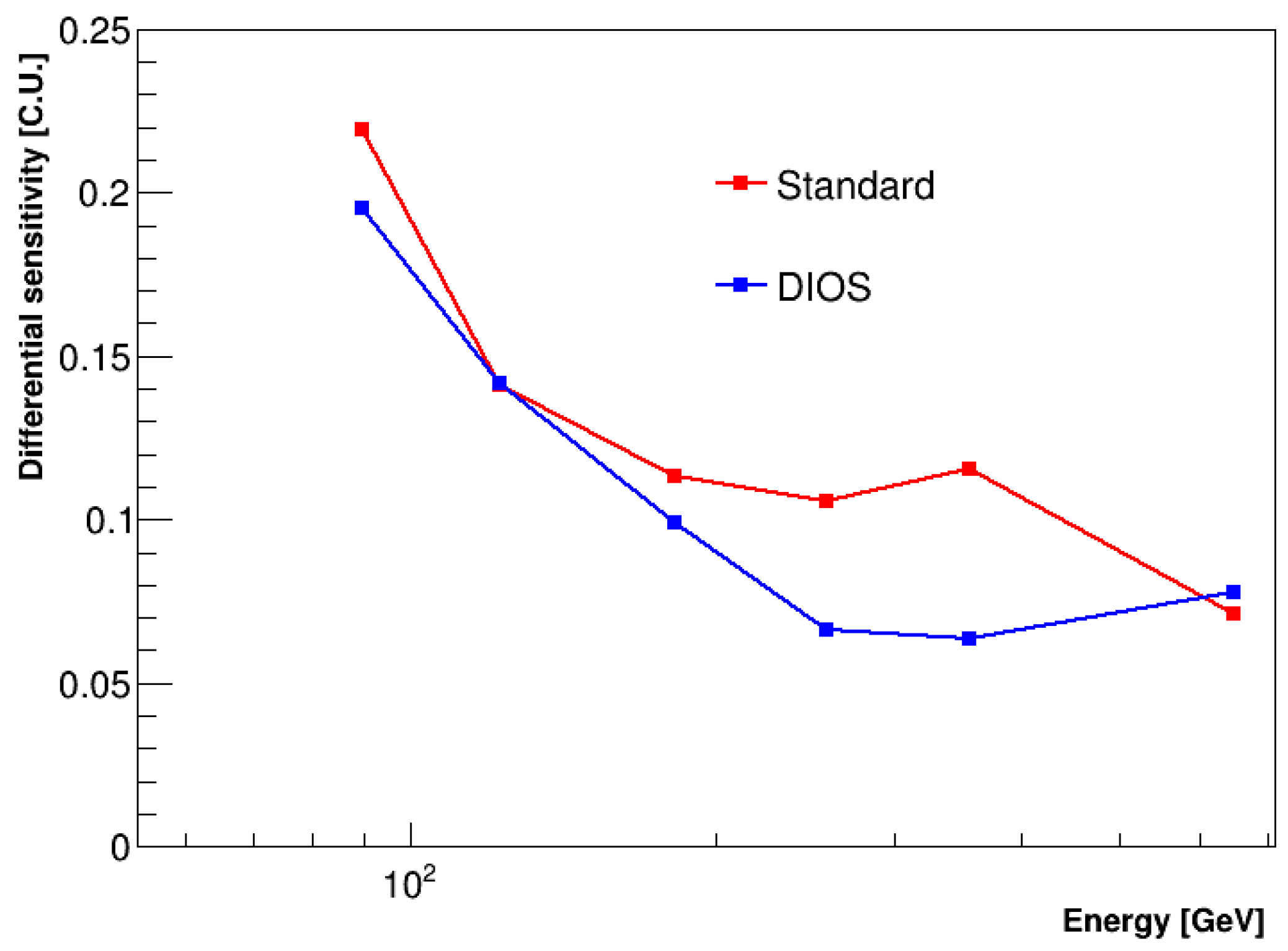
| Method | Excess of Gamma Ray Events | Significance | |
|---|---|---|---|
| DIOS | 1921 ± 133 | 14.5 | 1.49 |
| Standard | 1230 ± 106 | 11.6 | 1.19 |
Disclaimer/Publisher’s Note: The statements, opinions and data contained in all publications are solely those of the individual author(s) and contributor(s) and not of MDPI and/or the editor(s). MDPI and/or the editor(s) disclaim responsibility for any injury to people or property resulting from any ideas, methods, instructions or products referred to in the content. |
© 2025 by the authors. Licensee MDPI, Basel, Switzerland. This article is an open access article distributed under the terms and conditions of the Creative Commons Attribution (CC BY) license (https://creativecommons.org/licenses/by/4.0/).
Share and Cite
Khurana, M.; Yadav, K.K.; Chandra, P.; Singh, K.K.; Pathania, A.; Borwankar, C. PyMAP: Python-Based Data Analysis Package with a New Image Cleaning Method to Enhance the Sensitivity of MACE Telescope. Galaxies 2025, 13, 14. https://doi.org/10.3390/galaxies13010014
Khurana M, Yadav KK, Chandra P, Singh KK, Pathania A, Borwankar C. PyMAP: Python-Based Data Analysis Package with a New Image Cleaning Method to Enhance the Sensitivity of MACE Telescope. Galaxies. 2025; 13(1):14. https://doi.org/10.3390/galaxies13010014
Chicago/Turabian StyleKhurana, Mani, Kuldeep Kumar Yadav, Pradeep Chandra, Krishna Kumar Singh, Atul Pathania, and Chinmay Borwankar. 2025. "PyMAP: Python-Based Data Analysis Package with a New Image Cleaning Method to Enhance the Sensitivity of MACE Telescope" Galaxies 13, no. 1: 14. https://doi.org/10.3390/galaxies13010014
APA StyleKhurana, M., Yadav, K. K., Chandra, P., Singh, K. K., Pathania, A., & Borwankar, C. (2025). PyMAP: Python-Based Data Analysis Package with a New Image Cleaning Method to Enhance the Sensitivity of MACE Telescope. Galaxies, 13(1), 14. https://doi.org/10.3390/galaxies13010014







